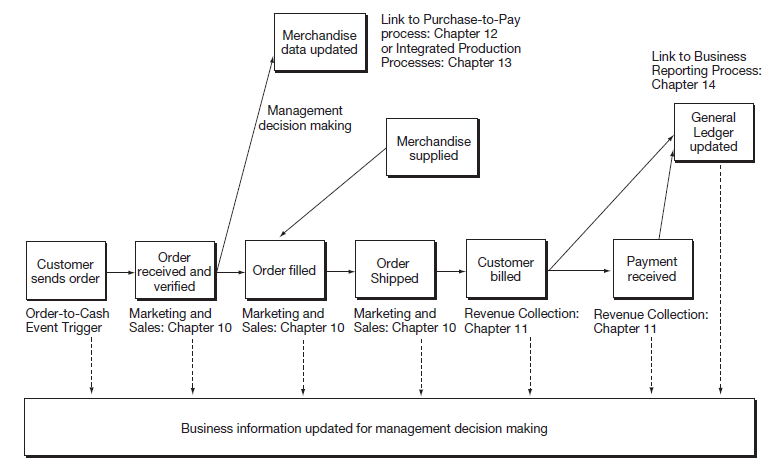Before we look at the details of the M/S process and how it functions, let’s set the stage for our study by picturing again how this process relates to other processes in a company. Figure 11.1 depicts the business events that combine to form the Order-to-Cash process.

You can see from Figure 11.1 that the M/S process triggers the revenue collection portion of the Order-to-Cash process and shares data with the purchasing and manufacturing processes (THE “PURCHASE-TO-PAY” (PTOP) PROCESS and INTEGRATED PRODUCTION PROCESSES (IPP)) but does not interact directly with the general ledger in the business reporting process (THE BUSINESS REPORTING (BR) PROCESS). When M/S prepares a sales order, it works with the inventory process so that the products can be sent to the customer. Later, when the goods are shipped, M/S informs the revenue collection process of the shipment so a bill can be sent. These interfaces are examined in detail later in this chapter.
The operational aspects of the M/S process are critical to the success—in fact, the very survival—of businesses today and in the future. Indeed, many organizations focus the bulk of their strategic Information Systems investment on supporting M/S process effectiveness. That is why later sections of the chapter discuss the vital topics of decision making, satisfying customer needs, and employing technology to gain competitive advantage.
- 4622 reads






